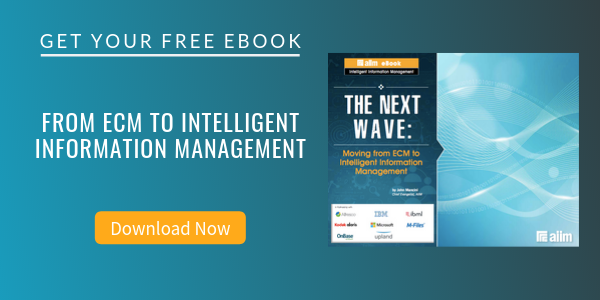
8 Ways to Ensure Return on the Investment with Enterprise Content Management Initiatives
Enterprise Content Management (ECM)
1. Business Assessment.
Enterprise Content Management (ECM) should be implemented to help an organization achieve its business objectives and strategies. Recent industry studies indicate four primary drivers for ECM adoption: cost reduction, enhancing customer service, ensuring business continuity, and regulatory compliance. Organizations should do a thorough assessment of their needs in these key areas and identify the strategic imperatives that should be targeted by ECM. Return on the investment (ROI) provides proof of how ECM supports the organization’s business strategies. Success is identified by measuring business benefits.
2. Technology Assessment.
Organizations should also do a technology assessment to understand what they currently have and to identify what they ultimately need to meet their business strategies. The goal is to identify the gaps between the current and future states of the technology infrastructure. Careful consideration should be given to leverage existing technology investments.
3. Seek Expert Assistance.
It is recommended you seek the assistance of knowledgeable system integrators who can assist in assessing, designing, implementing, training, and supporting your ECM initiatives. The information technology professional you select should have vast experience in content management integration and be committed to being your partner for the lifecycle of the ECM project.
4. Careful Vendor Analysis.
In conjunction with your selected information technology professional, you should carefully analyze a number of potential options for your ECM project. The options should be compared across a number of different criteria, such as fit with strategic objectives, cost-benefit result, non-financial benefits, scalability, ease of use, and implementation risks.
5. Demand Proof of Handling.
Have your system integrator demonstrate your content being handled by the recommended hardware and software solutions. Many vendors will offer a try and buy type program to allow you to try out product features and functionality before you make a purchasing decision.
6. Phased Approach.
A phased approach is recommended when implementing ECM. This will enable your organization to find quick wins, which can help prove the concept of ECM and are essential to justifying the continued investment and support for the project. Start by identifying a single information–intensive business problem, apply the appropriate technology to address that problem, measure the ROI, and, if successful, allow this to be the champion to further the adoption of ECM throughout the enterprise.
7. Benefit Realization.
At the end of each phase of ECM deployment, it is important to thoroughly measure the benefits realized to prove that all expectations from the ECM project have been met. Measure both return on the investment and value add on the investment. ROI are tangible benefits that can be translated into quantifiable financial savings. Some examples would include reducing staff positions, reducing storage requirements, and reducing reliance on courier services. Value add on the investment are intangible benefits that are not quite as easy to convert to actual dollars but are certainly desirable results of implementing ECM. Some examples would be enhanced customer service, faster information retrieval to demonstrate compliance, and more reliable content that leads to better decision-making.
8. Leverage the Investment.
Organizations should always look for ways to leverage their IT investments. For most organizations, when deploying ECM, there will be a beginning, a middle, but no end. Organizations should constantly be evaluating the next content-centric project to embrace and identify the expected benefits from that project. This will enable ECM to evolve throughout the enterprise. Think big. Start small. Grow big steadily.



